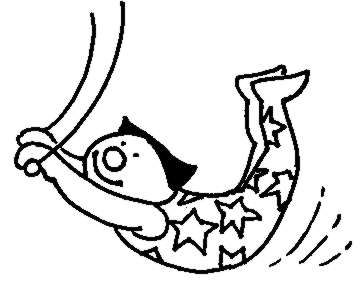Gymnasts on Trapeze

Children are imaginative and compassionate and love to play games. This is a very powerful combination that works wonders in teaching. I use it to develop one of the greatest assets of a musician- the skill to play rhythmically. Some may argue that ability to play with expression is more important. But as Igor Fleisher, brilliant viola player and a prominent music educator says: "There is no expression without a rhythm".
Playing rhythmically requires a lot of focus and concentration and is not easy. Leon Fleisher, one of the greatest American pianists, teaches his students that a pianist needs to extract sound "as late as possible, but not a moment later." But how do you explain this to a young child and make it interesting and vivid enough for a child to remember it? I try to create an image a child can relay to. This is my story:
Have you ever seen a gymnast on a trapeze? The one that swings high in the air and jumps from one trapeze to another? The gymnast needs to maintain the rhythm to coordinate movements of both trapezes. And there is a single precise moment in time when the trapezes are not too far or too close - the perfect moment to make a safe jump.
The sounds like gymnasts on the trapezes of steady inner count - they have to jump to or leave these trapezes at a precise moment in time - otherwise, they would fall.
